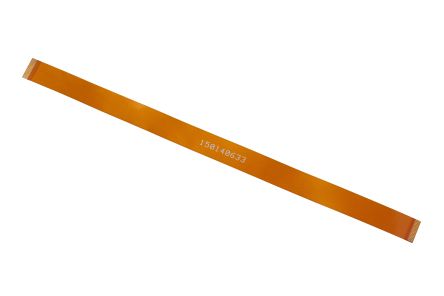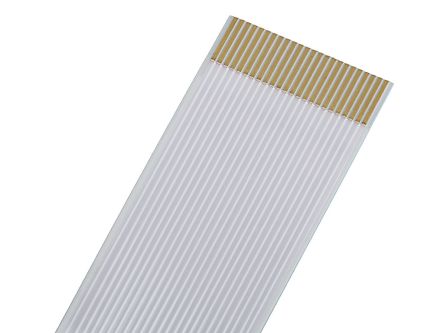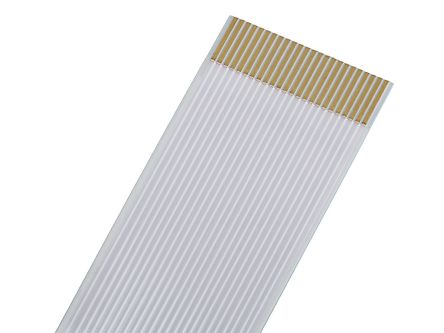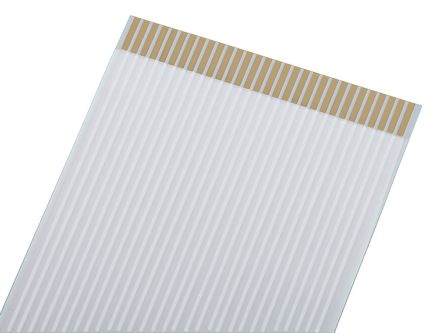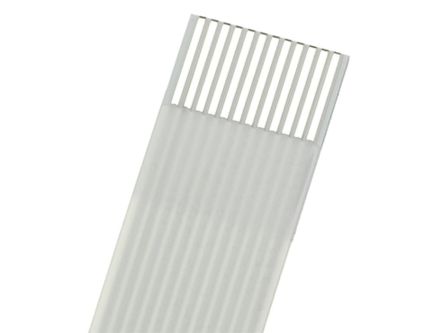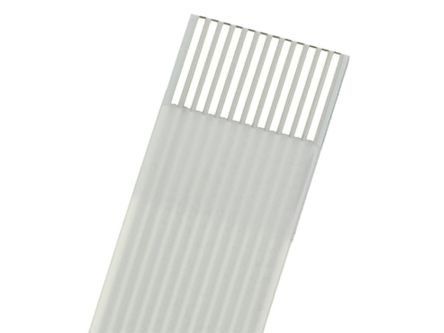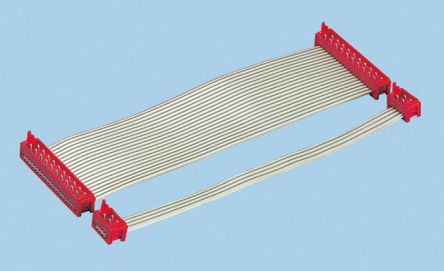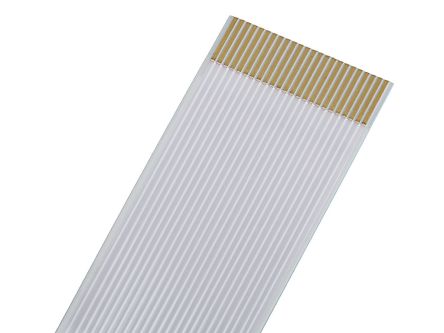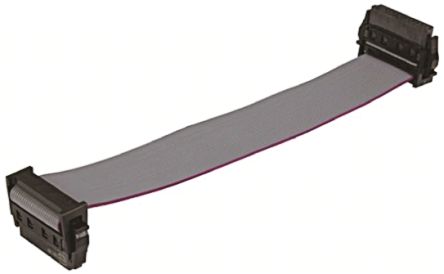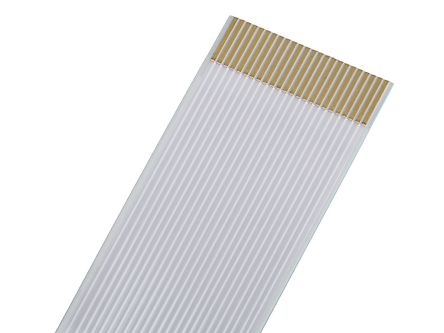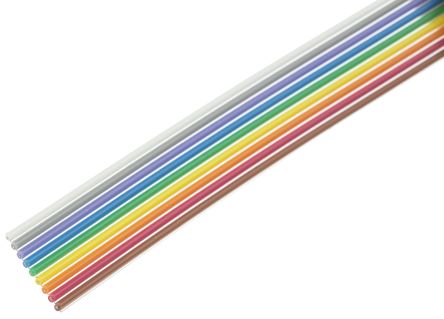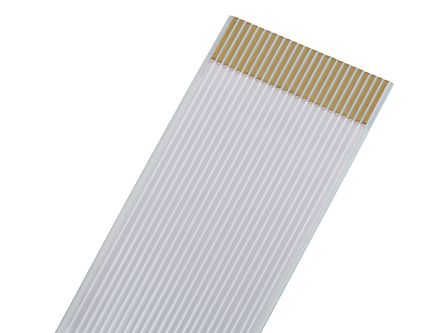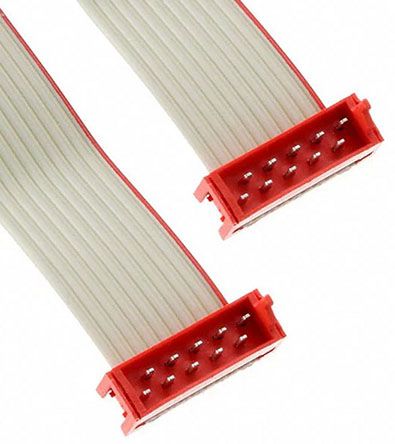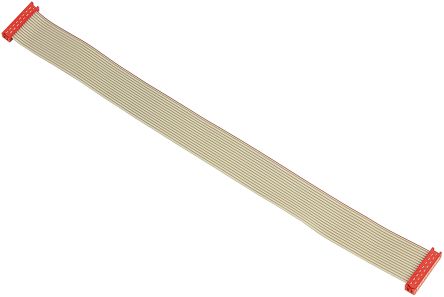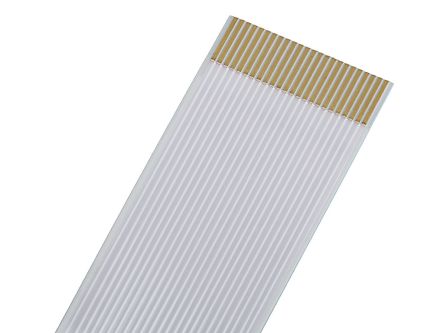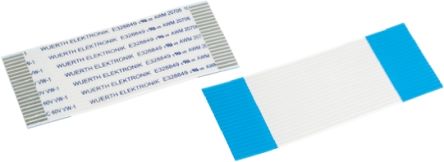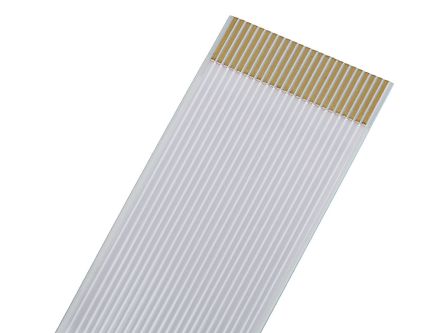- Automation & Control Gear
- Cables & Wires
- Enclosures & Server Racks
- Fuses & Circuit Breakers
- HVAC, Fans & Thermal Management
- Lighting
- Relays & Signal Conditioning
- Switches
- Batteries & Chargers
- Connectors
- Displays & Optoelectronics
- ESD Control, Cleanroom & PCB Prototyping
- Passive Components
- Power Supplies & Transformers
- Raspberry Pi, Arduino, ROCK, STEM Education & Development Tools
- Semiconductors
Ribbon Cable
A ribbon cable, also known as a flexible flat cable (FFC cable), is a thin cable composed of multiple small-grade insulated wires running parallel to each other. They are a type of electrical cable designed to provide multiple connections in a compact and organised format. With each core situated side by side, they form a wide flat cable resembling a piece of ribbon. This flat and flexible design makes them ideal for applications where space is limited or where the cable needs to bend or flex during use.
Types of Ribbon Cable
Flat Ribbon Cable
A flat ribbon cable, also known as an FFC cable, is a flexible thin cable composed of multiple small-grade wires arranged in a flat, ribbon-like configuration. They are commonly used for internal wiring in electronic devices and systems, such as connecting a hard drive to a motherboard or linking a display to a control board.
Round Ribbon Cable
Round ribbon cables offer a space-saving alternative to traditional round cables. They consist of a group of insulated ribbon wires laid out flat, side by side, often with different colours to aid identification.
Round ribbon cables are mainly used for external wiring in electronic equipment, appliances, and consumer products. Compared to other types of ribbon cable, they take up far less room, which makes them useful if wiring is needed in a limited space.
Round ribbon cables come in shielded and unshielded forms. Shielded ribbon cables provide additional protection against electromagnetic interference, ensuring signal integrity in sensitive electronic environments. They also come with different voltage ratings, capacitance, strand sizes, and number of strands.
Benefits of Ribbon Cables
Space-Saving
Ribbon cables are designed to be space-saving, allowing for compact wiring solutions in electronic devices and systems. Their flat profile enables them to fit easily in tight spaces, reducing clutter.
Organisation
The parallel arrangement of conductors in ribbon cables promotes neat and organised wiring. This makes it easier to identify and trace individual wires, simplifying assembly, maintenance, and troubleshooting.
Flexibility
Ribbon cables are highly flexible, allowing them to bend and flex without damage. This flexibility makes them suitable for applications where the cable needs to move or be routed around obstacles, such as in robotic arms or automotive wiring harnesses.
Common Uses of Ribbon Cables
Ribbon cables are versatile and find applications in various industries and devices:
- Internal wiring in computers: Ribbon cables are used to connect internal components within computers, such as hard drives, CD/DVD drives, and other peripherals.
- Printers and scanners: The print head, scanner head, and other moving parts in printers and scanners are connected using ribbon cables, enabling reliable data and signal transmission.
- Industrial automation: Industrial automation systems rely on ribbon cables to connect sensors, actuators, and control panels, ensuring reliable communication and control in industrial environments.
- Consumer electronics: Ribbon cables are found in various consumer electronics, such as televisions, audio systems, and gaming consoles, connecting internal components and providing flexible wiring solutions.
How to Choose the Right Ribbon Cable
When selecting a ribbon cable, several factors should be considered to ensure compatibility and optimal performance:
- Number of conductors: Choose a ribbon cable with the appropriate number of conductors to match the connection requirements of your application.
- Length: Choose a ribbon cable with sufficient length to reach between the components you are connecting. Avoid excessive length, as it can introduce signal degradation or interference.
- Shielding: If your application requires protection against electromagnetic interference, choose a shielded ribbon cable. Shielding helps to maintain signal integrity and prevent data corruption.
- Voltage and current rating: Ensure that the ribbon cable has a voltage and current rating that is suitable for the electrical requirements of your application.
How to Install Ribbon Cables
Installing a ribbon cable typically involves connecting it to appropriate connectors on the devices or components being linked. Ensure correct alignment and secure connection to prevent damage or poor contact.
For those unsure about proper installation procedures, consider seeking assistance from a qualified technician to ensure correct and safe installation according to industrial electrical safety standards.
How to Order Ribbon Cables from RS Hong Kong?
RS Hong Kong is a trusted flexible flat cable supplier and distributor, offering a wide selection of high-quality flat power cables from reputable brands like Molex, Wurth Elektronik, and TE Connectivity.
Our user-friendly online platform makes it easy to find the perfect ribbon cable for your needs, with specifications and technical information available for each product.
In addition to ribbon cables, we offer a comprehensive range of other electrical components, parts, and tools, such as SSR relays and laser measurement instruments. Find all the hardware products you need at our one-stop online shop conveniently and easily!
How Delivery Works at RS Hong Kong
RS Hong Kong’s efficient delivery services are designed to provide a seamless and convenient shopping experience. Our flexible options, including next-day and express delivery, ensure you receive your products promptly and efficiently.
To learn more about our delivery options and estimated delivery times, please visit our delivery information page.
